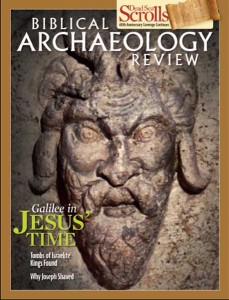
The pendulum is beginning to swing back again. Before 20th-century archaeologists began uncovering it, Jesus’ Galilee was generally considered rural Jewish terrain. Then archaeologists made some astounding finds. Excavations at Sepphoris, less than 4 miles from Jesus’ hometown of Nazareth, revealed inscriptions in Greek, Roman architecture and some breathtaking Greco-Roman art, including the famous mosaic dubbed by excavator Carol Meyers the “Mona Lisa of the Galilee.” The “Mona Lisa” was part of a larger mosaic depicting a symposium (a dinner with ample alcohol) with the mythological hero Hercules and the god of wine, Dionysus, as guests.
Digs at other sites in Galilee uncovered similar finds. The scholarly community was surprised, impressed and excited, and naturally sought to incorporate this new information into their reconstructions of Jesus’ Gzalilee. Some scholars argued that Greek complemented Aramaic as a language of daily use in Galilee, that Greco-Roman architecture dotted the landscape and that artistic depictions of emperors, deities and mythological heroes were common.
Already a library member? Log in here.
Institution user? Log in with your IP address.

